Between the Tigris and Euphrates rivers extends a wide and fertile valley that deserves to be called “The Cradle of Civilization” more than any other place in the world. To the south of this long basin, the ancient Sumerian entrepreneurs were determined to build the first cities of the world more than 5,000 years ago. They also devised a writing system, discovered bronze and were the ones who first used the wheel in their vehicles. Conscious of the strength of their great organization and the value of the waters they defended, the first settlers of the valley sustained the oldest wars in history, completely different from simple tribal skirmishes. Let’s learn about the ancient Sumerian civilization, its legacy, and its culture.
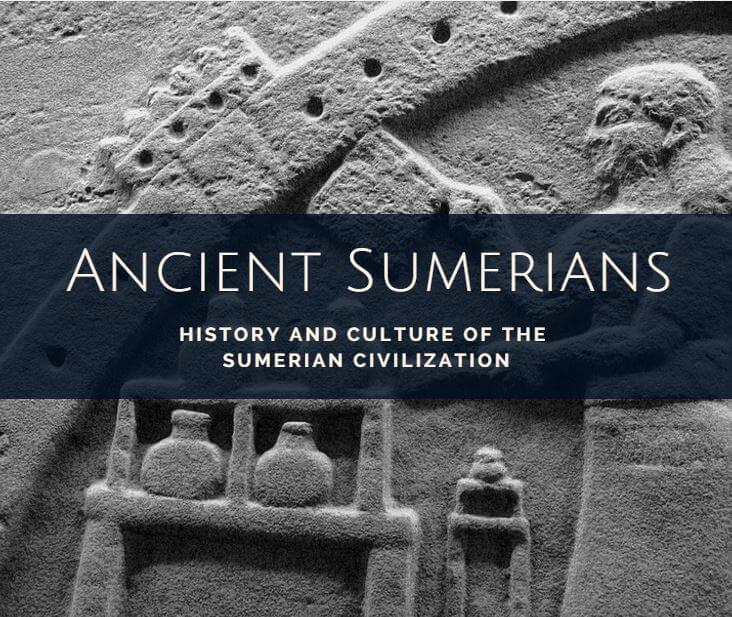
Ancient Sumerian Civilization
Contents
- Ancient Sumerian Civilization
- Introduction
- The First Wars
- The Ancient Sumerian Society and Language
- Sumerian Writing
- Ancient Sumerian Cities
- City and Country
- The Protodynastic Period
- Economic and Social Structure of Ancient Sumer
- Rivalries Between City-States
- The Universal Empire of Sargon and his Successors
- Structure of the Sumerian Empire
- Sumerian Trade
- Sargon I of Akkad
- The Akkadian Empire (2,334-2,193)
- Sumerian History
Introduction
The territory colonized by the Sumerians was known by the Greeks as Mesopotamia, “country between two rivers”. Later the name was applied to the whole length of the valley that centuries later would also welcome the Akkadians, Babylonians, and Assyrians. These peoples came as conquerors, but gradually absorbed much of the civilization of their predecessors and added it to their own knowledge of architecture, sculpture, astronomy, mathematics, and medicine. These peoples survived for more than 3,000 years until the conquest of Babylon by the Persians in 539 BC made Mesopotamia a part of a vast empire. Currently, the Marsh Arabs in the Euphrates delta live in straw huts very similar to those built long ago.
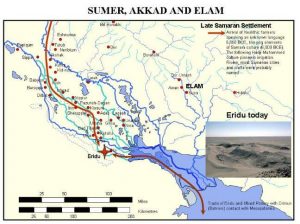
The Tigris and Euphrates follow a tortuous course from the northwest to the southwest, traversing modern Iraq on their way to the Persian Gulf. To the sides of the valley lie vast deserts, but about 10,000 years ago, before the glaciers withdrew at the end of the last Ice Age, the valley was bordered by grasslands that supported livestock and nomadic hunters.
As the ice caps melted, the climate became drier and the grasslands became deserts. However, the two rivers overflowed annually and deposited their muds along the two banks, forming a green and fertile strip in the middle of the aridity. The men moved with their animals to these meadows which were the only water reserves, along with some oases. The nomads learned to plant grains (wheat and barley derived from wild grasses) in areas near the river. The population joined efforts to build dams and irrigation canals that stored and distributed water. By 5,800 BC, the nomads began to form colonies along the lower reaches of the Tigris and Euphrates, where they built mud huts to protect themselves in winter from storms. They tamed some wild animals from the surrounding area, and from them, they obtained milk and meat to feed themselves and skins to dress. Although the man continued to hunt, his sustenance no longer depended exclusively on wild animals, and he could settle in an area for long periods of time. Consequently, around 4,000 BC, a people, probably from Central Asia, had become the sole colonizer of all Mesopotamia. These primitive Sumerians, in addition to being expert farmers, used stone and flint tools, built large temples, and crafted pieces of pottery with black accents. Around 3,500 BC The foundations of civilization had already been laid along the valleys between the rivers of Mesopotamia.
The First Wars
The isolated settlements, at least initially, were the basis of the Sumerian civilization during its thousand-year history. Sumer was never a solidly unified state like Egypt, led by a king. On the contrary, it contained numerous independent and sovereign cities. Sometimes they would join together in loose federations; Others fought each other for the domination of some fertile areas near the two rivers or great canals. After one of these wars, a king or governor temporarily became lord of the leaders he had subdued.The captives taken in the battles were the first slaves.

For a long period, the ancient Sumerians prospered and multiplied. Agriculture and cattle ranching continued to be the main sources of wealth, but over time, the Sumerian farmers produced a surplus of goods far exceeding their immediate needs. Thus appeared a social sector that neither took care of the land nor took care of the cattle; They were the new builders, artisans, priests, and scribes who gradually converted the Sumerian cities into the first centers of civilized society.
Mesopotamia lacked suitable quarries, but the Sumerian builders, using sun-dried mud bricks, built large cities on the plains near the rivers. New buildings were erected on the leveled debris of the old ones. This is why the floor of the cities ascended gradually and formed artificial mounds called tells. In the nineteenth and twentieth centuries, important vestiges of many of these primitive cities have been discovered. Among them is Ur, to the west of the Euphrates (320 kilometers from the Persian Gulf), Uruk, 64 kilometers further north (marked in the Bible as Erech), and at the site of modern Warka, and Nippur, 160 kilometers from Baghdad. The Sumerians believed that the gods ruled the earth and that men were created to serve them. It was believed that each city belonged to a certain god or goddess: Aun, god of the sky, Enlil, god of the atmosphere, Enki, god of water. In this primitive civilization, when crops were destroyed by droughts or any other natural calamity, such as floods or locusts, men feared the wrath of the gods. To placate their anger, a hierarchy of priests celebrated elaborate ceremonies within the temple of each city, home-ground of the local deities. Sometimes a tall tower called a ziggurat was built next to the temple.
The Ancient Sumerian Society and Language
Within the temple grounds were workshops for artisans, whose products contributed to Sumer’s prosperity. They were consummate metalworkers who learned to make bronze by combining copper and tin, made spears, axes, tools and ornamental figures of copper, bronze, gold and silver. Although the pottery wheel had been invented in prehistoric times, the Sumerians devised the first vehicles of wheels, and thus they had agricultural and military wagons. The earliest known vehicle wheels are depicted on Sumerian tablets, and date to approximately 3,250 BC. They were built with three solid wood plates, joined by slats of the same material and lined with leather rims.
In Sumerian society, writing was the basis of progress, and these inventions are owed to the Sumerians from about 3,000 BC. It arose with the development of commerce when the Sumerians needed a system to record their commercial transactions. At the beginning, they were engraved on clay tablets with a stamp. They depicted simple representations of objects, called pictographs. Important data was kept on baked tablets.
Over 500 years, these primitive pictographs evolved into abstract signs that represented words or syllables. The impression made on the tablets with square pointed stamps resulted in wedge-shaped signs and the combination of these signs lead to what is called cuneiform writing (from the Latin cuneus, which means “wedge”). This type of writing spread throughout the Middle East and was used to write in large numbers of languages, including the Babylonian and Persian.
The Sumerians were also mathematical experts, counting by the tens as in the modern world, but also taking sixty as a base. So they divided the circle into 360 degrees, the hours into sixty minutes, and the minutes into sixty seconds.
Sumerian Writing
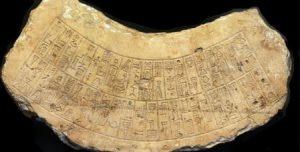
The Sumerian writings preserved in tablets of cooked mud are comprised of things ranging from commercial and legal inscriptions to so-called sapiential literature, consisting of philosophical reflections similar to the psalms. This sapiential literature is one of the most important legacies of ancient Mesopotamia, not only for the details of life in Sumerian cities such as Ur, Nippur and Uruk, but for its excellent quality. Many of their simple and sharp observations are now fully valid:
“At home, the capricious woman adds sorrow to the pain.”
“We spend if we are doomed to die and save if we anticipate a long life.”
Sumerian literature also contains epic tales starring their first leaders. The Poem of Gilgamesh is among the most important of universal literature. Gilgamesh appears as king of Uruk, although it is not known with certainty if his existence was mythical or real. The epic describes him as an adventurer and a man of action, determined to find and defeat Humbaba, keeper of the woods. To this end, he penetrated her domain, towns of Cedros, with his companion Enkidu that represented the civilized nomad. This story may symbolize the invasion of distant cedar forests by men of the plain, who needed wood for their constructions. The poem recounts the journey of Gilgamesh in search of immortality until it encounters the immortal Utnapishtim, the survivor of a great flood. Lower Mesopotamia was struck by devastating floods in the flood waters of rivers, and this episode may allude to a flood of great magnitude. With the help of Utnapishtim, Gilgamesh discovers the “plant of youth”, but loses it in the return to his home.
Ancient Sumerian Cities
Uruk and the First Expansion of Urbanism
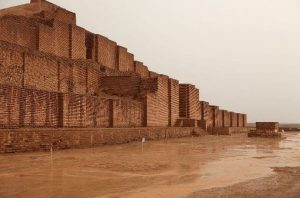
Uruk was the center of the phenomenon of urbanism known in Mesopotamia and in the lower region of Akkad (Central Mesopotamia). Its culture spread to other areas near the middle and upper reaches of the Euphrates and even to Southeastern Anatolia, Southwestern Iran, and Syria.
The Urban Revolution brought with it the emergence of the state and social and economic stratification, as well as the use of writing. With it, there was a separation between primary food production and specialized techniques.
The villages, in charge of food production, soon became subordinated to large urban centers. Food surpluses allowed the specialists of cities to live without concern. Food producers, in turn, received specialized products of artisans, whose control of the techniques allowed them to enjoy some social and cultural prestige above the rest of the population.
However, the upper stratum of the population occupied the city, the priests and those who developed administrative functions, like the scribes. Now, large organizations temples and palaces appeared, which differed substantially from the city of villages.The temples were dedicated to the cult and were homes of the gods, while the palaces were inhabited by kings, accompanied by his court and it acted as an administrative center.
The surpluses accumulated in the warehouses of the palaces, and through this, tasks arose for writing and file-keeping. The temples and palaces possessed buildings where dedicated employees lived. The specialized personnel working for the state lived off the land or received land to cultivate. They were genuine servants forming a social, political, and economic elite. Palace workers were varied, as is clear from lists of known professions.The objects were produced in sequence, forming a hierarchy between master craftsmen, workers, and apprentices. Payment for work depended on one’s ability to work and carry out the desired tasks, which led to a true labor stratification.
The center of the Urban Revolution was the city of Uruk in which one can distinguish two distinct periods: ancient Uruk (3500-3200) and recent Uruk (3200-3000).
Uruk is a well-known city thanks to many excavations.It was the most important urban center of the Sumerians, as indicated by its surface, its temples, and administrative buildings. It had a huge sanctuary in one of the sacred places where, later, the Ziggurat was built.
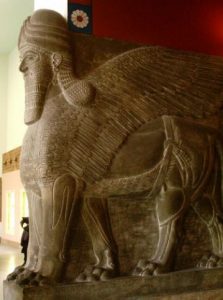
Another sacred area, the Eanna, housed palaces, temples and columns, and as above, underwent numerous expansions and reconstructions.
They controlled the surrounding territory, which shows that it was a real capital at the expense of villages close to it, which disappeared.Other minor urban centers were also defeated by Uruk. These were characterized by identical temple structures, like the Eridu or Tell Oiugair, both similar to those of Uruk.It is, on the one hand, small commercial enclaves in the Indian territory of Uruk, or indigenous centers with an urban organization from the Uruk. Godin Tepe in the Zagros mountains and Hassek Huyuk in the upper Euphrates belonged to the first group.
This period was characterized by great wealth, as shown by the excavations in Nippur, the city which was also part of the culture of Uruk, like Susa centers and Habuba Kebira. Susa has temples, walls, and urbanism from Uruk.Other important centers around 2900 BC include Ninive and Tell Brak, in the region of Habur.
The existence of these colonies of Uruk was due to commercial needs, specifically the need for metal, hard stones, and wood.In the region of Anatolia, a more advanced copper metallurgy developed than that of Mesopotamia. This land also had abundant pastures, forests, and agriculture. They had well-maintained commercial relations with the south.
In these lands lived people from Uruk and it’s possible that they formed an organized political structure. Its inhabitants did not know any developed scripts, although they used countermarks. The period of great splendor of these cities was dated to Eanna IV. The Crisis of the Uruk culture does not seem to be due to a crisis of the metropolis, but a rejection of it by indigenous cultures.
Habuba Kebira disappeared and a new population lacking political and administrative organization settled in Malatya.This first phase of urbanism left its impact on ancient technology and various aspects of politic and social character. Its fall ushered back a culture based on the village.
The Gemdet Nasr Culture
At the end of the fourth millennium and the beginning of the next, a phase began in Mesopotamia call Gemdet Nasr, near the city of Kish, along with the Protodynastic I phase (2900-2750). Uruk’s III-Gemdet Nasr phase was characterized by economic and demographic development and an expansionary trend towards the valley of Dujala in Kish. However, The Protodynastic I period was actually a crisis, as shown by the clear decline in trade.
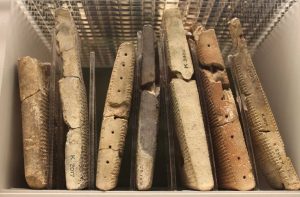
Lower Mesopotamia became a regional culture, albeit with better organization and higher demographic rates.From now on, the palace became more important than it did in Gemdet Nasr, indicating the existence of a political system that wasn’t linked to the temple. Writing reached its maximum development in the culture of Uruk III in Gemdet Nasr. Glyptics decoration became geometric in this last phase and in the Protodynastic I phase. Painted pottery became more regional.
Gemdet Nasr pottery spread to the Persian Gulf and Oman. The population of the city also lived off of fishing, livestock, and oasis agriculture.
In Susiana, a process known as Portoelamitic culture had its place; they had an original writing system and ceramic and glyptic styles different from that of Mesopotamia.This culture spread to Tell Malyani Sialk IV and Tepe Yahya; they traded with hard stones, and stone glasses that were exported to Mesopotamia.
Sumerian Cities in the Third Millenium
The urban revolution had two major centers in Mesopotamia: Sumer and Elam. The Sumerian culture had a great development of urbanism during Gemdet Nasr (3000-2800 BC) to the north, and Protodynastic towards 2650 BC. Urban culture dominated Akkad, Elam, Sumer and Diyala.
In the Early Dynastic period, during the reign of Mesilim in Kish, the urban culture of Sumer and Akkad had, together with the existence of the temples, with a political structure at the apex included the monarch, vicar of God, according to the official ideology.
The Sumerian urbanism served as a model for other important commercial and strategic centers such as Asur in the upper Tigris or Mari on the middle Euphrates. The first, located on the road leading to Anatolia and Assyria inside the Protodynastic period had a temple dedicated to the goddess Ishtar, whose iconography is fully Sumerian.Mari, an important node of communication with Syria and Anatolia, had temples built before the reign of Sargon, such as Ishtar, Ninnizaza, and Ishtarat, all still Mesopotamian models, and a remarkable palace, which absorbed many of the functions of the temple.
City and Country
The typology of Middle Eastern cities was not uniform. Between the years 3400-3000 a large concentration of settlements, coinciding with the emergence of a strongly centralized power was detected in the region of Uruk. It is estimated that the city of Uruk, at the time of its peak had a population of between 30,000 and 40,000 inhabitants and an area of 60 by 40 kilometers.A 12-15 km belt around the city was exploited by urban farmers.
Some major city-states with famous temples had become important like Nippur, famous for the cult given to Enlil, or the city of Shipar held by the temple dedicated to Shamash. Nippur, had a sanctuary built by Urnammu, founder of the Third Dynasty of Ur, in honor of the god Enlil.They built a ziggurat and temple in his name. Within this sacred area, other temples dedicated to the goddess Inanna and the scribes were neighborhoods. The holy city had a rectangular urban layout.
Ur is the best example of a capital. The monarch, Urnammu, also left his mark and then so did Shulgi and Amarsin. It had a wall of adobe, temples and residential neighborhoods. A second trapezoidal wall surrounded the sacred precincts of the moon god, Narna, with its corresponding Ziggurat.Next to the citadel (which was a monumental complex) rose residences and palaces. Many urban centers were settled in desert regions, which responds to its commercial nature.
The Protodynastic Period
This phase is usually divided into Protodynastic I, Protodynastic II (2750-2600 BC.), Protodynastic III (2600-2450 BC.) and IIIb (2450-2350 BC), They are subdivisions well known for administrative documentation and recent court and political writings.

A good number of cities, which have become settled states appear on the Euphrates: Kish, Nippur, Akshat, Uruk, Ur and Shuruppak on the west bank; Lagash, Adah, Umma, Bal-Tibira and Zabalan on the east. To this world, the Sumerians belonged as well as Mari and Ashur, and related to that, Susa and Jamazi in the Zagros.
These city-states were independent but shared the same civilization, Sumeria. Is not entirely clear whether the Sumerians migrated to this land block or slow infiltration took place; documents were written in the Sumerian language, but the names of Semites and Akkadians are found in them.The latter were more numerous in the north while the Sumerians were in the south.
An analysis of onomastics leads us to the conclusion that there were at least three different contributions: one before the Sumerians coming probably from Iran, a Sumeria, whose components were dedicated to the administration or persons engaged with the elaboration of transformation products officials, and a third, Semite, who was dedicated to the control and performance of the highest positions.The first two populations, Sumerian and Pre-Sumerian and settled mainly in the northeast, while the third Semite population settled in the northwest.
Other languages, in addition to Sumerian, infiltrated later on, as the Semitic language, not Akkadian, (Eblaites and Amorite) in the west or Hurrian in the north.
The Duality of Temple and Palace
The Sumerian culture was characterized by the existence of two poles, the temple, and the palace. Both were economic centers of production, distribution, processing and trade of first order. The latter was carried out by rivers and land even in Anatolia, Egypt, and the Oxus Valley.
The temples were important agricultural and livestock farms. They operated as independent companies with specialized personnel of all kinds: shepherds, farmers, caregivers, weavers, carpenters, butchers, etc. A priest, a mayor, and an inspector were responsible for the administration, aided by the scribes.Slaves worked in the temple, they were dedicated to gardening activities and milling but there were also freemen who were paid and received lots of land to cultivate with their family.

The second pole was the palace, where the king resided. Palaces of this period are known in Eridu, Kish, Mari, etc. The monarch played the roles of judge and high priest. As vicar of God on earth, he managed the assets, but also managed their cities as if it were a large property.
Maintaining channels, necessary for agriculture, and the defense of territory were other responsibilities. The army and Staba formed by the palace servants (in small numbers), to which were added, if necessary, peasants, with which arose between six hundred and seven hundred troops.In the call Stele of Vultures soldiers formed a phalanx defended by shields and armed with pikes.Also known as chariots as indicated by the standard of Ur, they were drawn by wild asses, which were used primarily for the pursuit of the enemy.
The palaces functioned as large domains. Their importance was not only administrative and political but also economic. Alongside these two poles, there were neighborhoods of private homes, where families engaged in economic activities resided. The king had the titles of Lugal (in Kish and Uruk), In or Great Priest (in Uruk) and Ensi of God (in Lagash). The term In indicates that the royalty was of divine origin.
Soon there was a separation between the cultural and political functions, whereby the temples lost some of their importance, however the monarch was always subordinated to the god, and the temples to the state administration, the city-state that unified everything.
The relations between the different city-states were not always pacific since there were different gods and different dynasties that frequently looked for a theological justification. The most powerful Sumerian kings intervened in the disputes between cities. Only Nippur, with its sanctuary consecrated to Enlil, god of all Sumerians, performs a unifying role.
Economic and Social Structure of Ancient Sumer
Villages contributed to the support of temples and palaces, with agricultural surpluses and livestock delivered in the form of fees and staff deliveries for the army or public works.
The majority of the population living in the countryside was of free status. Next to it was formed another one, linked to the temples and palaces, of administrators, merchants, and artisans, who became a privileged rich class.
The basis of the economy was agriculture and livestock. There are texts dating back to the Protodynastic period, which mention the development of both at the time of the III dynasty of Ur; According to these texts, the field was divided into irrigated lands and steppes dedicated to the feeding of livestock.
Rivalries Between City-States
The first real inscriptions date from the period Protodynastic II and belong to Enmebaragesi de Kish. From Protodynastic IIIa, the archives of Abu Salabij and Fara are preserved as well as the dedications of the royal tombs of Ur.
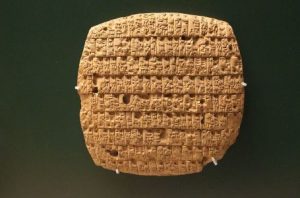
The documentation is more abundant from Protodynastic IIIb, with the actual inscriptions of Lagash and Ur, and the Lagash archives that retain references to the struggles between the different dynasties. The Sumerian royal list of the later date is also attached to these documents.
The best-known dynasty is that of Lagash, a rival city of Umma, which attempted to seize some pasture-rich border areas. It is possible that Mesalim of Kish would arbitrate in this litigation in favor of Lagash, however, the hegemony of Kish was of short duration and passed to Ur in times of Mesanepada and Aenapada. The names of Kish’s first Ensi are known: Enhegal, Lugal-shag-engur, Ur-Nanshe and Akurgal, the son of the former who continued the fight with Lunma.
Eanatum, who led Lagash to its peak, overcame the Ensi army of Umma, whose successor, Enakalli, agreed to deliver a contribution and disputed territories. Eanatum, also defeated the Elamites and the city of Akshak and incorporated Kish to their dominions, probably arriving until Subar and Mari. This monarch of Lagash is famous for the monument that tells of his feats, the one called Stele of the Vultures.
The struggle between Lagash and Umma continued until he overcame this last city-state and signed a treaty of alliance with Lugal-Kinishe Dudu, king of Uruk, who had inherited the kingdom of a prince of Ur who had seized Akshak, Kish and Of Uruk. Lagash soon fell into decay: Urukagina took a hit and seized the throne, suppressed the priests’ privileges and stopped the tax inspectors. Lugalzaggizi, from Umma, managed to seize Kish, Ur, Uruk and Lagash, arrived in the Mediterranean and unified Sumer.
The struggles between cities took place not only by the possession of bordering territories, sometimes raids penetrated Susiana and the center of Mesopotamia.
The conquest of the country of Sumer by Semitic people was not the result of invasions or radical conflicts but seems to obey the endemic struggles of some cities among others and to slow infiltrations of Semite nomads and some mass migrations.
Around 2300 BCE, Syria and Palestine were probably razed by nomads who did not rebuild the cities. The raids reached Egypt. The predominance of the Semite Akkadians over the Sumerian cities resulted in the bankruptcy of the economic system dominated by the palace, to the benefit of the family economy.
The Universal Empire of Sargon and his Successors
Tradition states that Sargon came from a family of humble origin; Had been born of a priestess and an unknown father. Abandoned by his mother, he was saved by a gardener and became cupbearer of Ur-zababa of Kish, whom he would eventually dethrone.

The royal inscriptions on the Akkadian kings are, unfortunately, few and have arrived in copies from Ur and from Nippur later on. It is known that, with Sargon, Akkad became an expansionist state. First, he overcame the king of Uruk, Lugal-Zaggizi, and those of Ur, Umma and E-ninmar, which allowed him to gain control of the lands between the Lower and Upper Seas, as the inscriptions proclaim.
During the second stage of his rule, Sargon reorganized the trade of his kingdom, which reached the Persian Gulf, India, Ebla, Mari and Taurus. Their commercial networks spread from the Mediterranean and Anatolia to the Persian Gulf and India. In a third phase, he overcame Elam, ruled by the Auan dynasty.
His successor, Rimush, dominated the Sumerian cities of Umma, Lagash, and Ur. Later, another of Sargon’s sons, Manistusu, led the conquests to Anshan and Shirijum, thus gaining access to the silver and diorite mines. With Naransin, the Akkadian empire reached its apogee. Domino Elam and arrived in the north to the high Mesopotamia and the mountainous region of Amaro-Tauro-Zagros. In the second stage, he destroyed Ebla and Armanum. He maintained good relations with the king of Auan, that came to depend on Akkad.
After Naran-sin, Shar-Kali-Sharri fought against Elam, Gutium (luristam) and Martu. After his death, a dynastic chaos arose, the Akkadian empire that was the first universal state of history, collapsed before the arrival of the Guti from the Zagros mountains.
Structure of the Sumerian Empire
The Akkadians believed that the god Enlil had granted his king the dominion of the world. Naran did not become proclaimed king of his country, which was an affront for the Sumerians. The Akkadian monarchy acquired lands and founded agricultural colonies. Territorial expansion is included in the obelisk of Manistusu, which refers to the 2900 hectares acquired by him in the region of Marat. Akkad was a unitary monarchy supported by a numerous army. Sargon came to command 5400 soldiers, in one of his campaigns against Syria.
In the religious aspect it is important to point out the divinization of the Akkadian kings. In the center of Akkad, Ensi governed, who depended on the monarch, but he retained some autonomy. In the peripheral areas of the empire, Akkad’s interests were mainly of a commercial nature.
Since the city of Akkad has not been archaeologically located, there is a lack of archives concerning the administration, which are necessary to review the documentation of marginal regions, like Umma. The Akkadian empire did not mean a break the Protodynastic stage III, nor did it cause a Semitic migration.
Sumerian Trade
During the Akkadian empire, trade developed very much, since at the Protodynastic stage it had reached high levels. The exchanges were made through intermediaries. The objective of the monarchs was to control the raw materials and, of course, the commercial roads that were in the hands of Ebla on the west side of Elam on the Iranian side and the port of Dilmun in the Persian Gulf.
The military expeditions of the kings of Akkad aimed at these routes of communication. Ebla dominated the entire trade of northern Syria and of upper Mesopotamia. Through the elamite confederation came the hard stones, lapins lazuli and tin. The island of Dilmun exported tin from Magan (on the coast of Oman), while from India imported exotic animals and vegetable perfumes.
Sargon I of Akkad
Around 2,300 BC, almost all Mesopotamia, including Sumer, was conquered by a military leader named Sargon. He led the Akkadians, a Semitic people who had long been the northern neighbor of the Sumerians, and possessed such a culture. However, while the Sumerians were divided into more or less independent city-states, Sargon wanted to create a unified kingdom. He fought against Lugalzaggesi, one of the chief rulers of Sumer, and locked him in a cage in the city of Nippur, an important religious center of the Sumerians. He then conquered the rest of the country, becoming the absolute owner of the united kingdom of Sumer and Akkad.
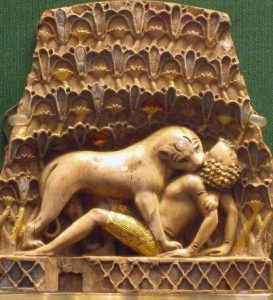 But Sargon did not stop there. He added to his conquests northern Mesopotamia, continued to Anatolia (modern Turkey), and probably reached the Mediterranean coast. His kingdom lasted for 56 years and created the first known empire in history. However, his administration was not strong enough to survive and succumbed to the incursion of the Gutians, a mountain town from the northeast.
But Sargon did not stop there. He added to his conquests northern Mesopotamia, continued to Anatolia (modern Turkey), and probably reached the Mediterranean coast. His kingdom lasted for 56 years and created the first known empire in history. However, his administration was not strong enough to survive and succumbed to the incursion of the Gutians, a mountain town from the northeast.
After more than a century of Gutian rule, Sumerian power resurfaced around the year 2,100 under a series of great leaders, the most important of which was Ur-Nammu. Among the huge buildings created by Ur-Nammu is the great ziggurat of Ur, dedicated to Su’en, god of the moon.
This ziggurat is impressive even in ruins, but at the time of its pristine splendor rose to a height of about 20 to 25 meters, with a steep staircase that ascended to the highest tower.
The Akkadian Empire (2,334-2,193)
In reality, it was not empires but a more centralized power than the one that existed in earlier times, which extended to regions farther from the capital, now turned into an administrative and political center of an area considerably larger than those of Cities state.
In the process of constitution of the Empire of Akkad, its militaristic and conquest characteristics were important.
The Akkadian kings sought a certain legality for their royalty, they boasted of their strength, vigor and victories, making propaganda of their power.
The City of Ur
Its ruins lie roughly between the modern city of Baghdad (Iraq) and the end of the Persian Gulf, south of the Euphrates River, on the edge of the al-Hajar Desert. The archaeological site of Ur is currently in Tell Muqayyar (Iraq). In ancient times, the Euphrates river flowed near the city walls; Controlling its exit to the sea, Ur was very well placed for the development of commerce and to extend its hegemony.
Ur was the main center of the cult of the Sumerian lunar god, Nanna, later called Sin by the Babylonians. The great ziggurat of this deity, one of the best preserved in Iraq, rises about 21 m above the desert. The biblical name, ‘Ur of the Chaldeans’, refers to the Chaldeans (Semitic people of the Aramaic language) who settled in the area around 900 BC. Genesis describes Ur as the starting point of the migration to Palestine of Abraham’s family around 1900 BC.
Ur was one of the earliest settlements founded (c. 4000 BC) by the Obeid culture in Sumer. Before 2800 BC, Ur became one of the most prosperous Sumerian city-states. According to ancient sources, Ur had three dynasties of rulers who, at different times, extended their control over Sumer. The founder of the First Dynasty of Ur was the conqueror and builder of the temple, Mesanepada (who reigned 2670 BC), the first Mesopotamian ruler mentioned in documents of the time. His son Aanepada (who reigned 2650 BC) built the temple of the goddess Ninhursag, excavated in recent times in Tell el-Obeid, about 8 km northeast of the site of Ur. There is little information about the Second Dynasty of Ur.
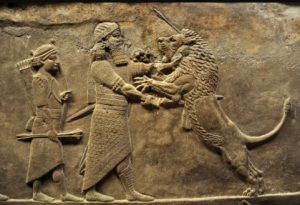 Ur-Namu (who reigned in 2113-2095 BCE), the first king of the 3rd Dynasty of Ur, revived the empire of Sumer and Akkad, gained control of the exit to the sea by 2100 BC. And made Ur the richest city in Mesopotamia. His reign marked the beginning of the so-called revival of Sumerian art and literature in Ur. Ur-Namu and his son and successor Shulgi (who reigned in 2095-47 BC) built Nanna’s ziggurat (c. 2100 BC) and magnificent temples in Ur And in other Mesopotamian cities. The descendants of Ur-Namu remained in power for more than a century, around 2000 BC, when the Elamites defeated the king of Ur Ibi-Sin (who reigned in 2029-2004 BC) and destroyed the city.
Ur-Namu (who reigned in 2113-2095 BCE), the first king of the 3rd Dynasty of Ur, revived the empire of Sumer and Akkad, gained control of the exit to the sea by 2100 BC. And made Ur the richest city in Mesopotamia. His reign marked the beginning of the so-called revival of Sumerian art and literature in Ur. Ur-Namu and his son and successor Shulgi (who reigned in 2095-47 BC) built Nanna’s ziggurat (c. 2100 BC) and magnificent temples in Ur And in other Mesopotamian cities. The descendants of Ur-Namu remained in power for more than a century, around 2000 BC, when the Elamites defeated the king of Ur Ibi-Sin (who reigned in 2029-2004 BC) and destroyed the city.
Reconstructed soon after, Ur became part of the kingdom of Isin; after the reign of Larsa, it finally incorporated Babylon. During the period in which Babylon was ruled by the Casitas, Ur continued to be an important religious center. It was a district capital with hereditary governors during the Assyrian period of Babylon.
After the establishment of the Chaldean dynasty in Babylonia, Nebuchadnezzar II began a new period of constructive activity in Ur. The last Babylonian king, Nabonides (who reigned in 556-539 BC), who appointed his eldest daughter the high priestess of Ur, Embellished the temples and completely remodeled Nanna’s ziggurat, rivaling even the temple of Marduk in the city of Babylon. After Babylon was controlled by Persia, Ur began to decay. By the fourth century BC, the city was almost forgotten, perhaps as a result of a change in the course of the Euphrates River.
The ruins of Ur were found and excavated for the first time (1854-1855) by the British consul J. E. Taylor, who discovered part of the ziggurat of Nanna. The British Museum began (1918-1919) the excavations in this place and in the neighboring Tell el-Obeid under the direction of the British archaeologists Reginald C. Thompson and H. R. H. Hall. These excavations were continued from 1922 to 1934 by a joint expedition of the British Museum and the Museum of the University of Pennsylvania (United States) under the direction of the British archaeologist Sir Leonard Woolley.
In addition to completely excavating the ziggurat, the expedition unearthed the entire temple area and parts of the residential and commercial neighborhoods of the city. The most spectacular discovery was that of the royal tomb, which dates back to around 2600 BC. and contained artistic treasures of gold, silver, bronze, and precious stones. The discoveries showed that the death of the king and queen of Ur was followed by the voluntary death of his courtiers and personal assistants and the soldiers and musicians of the court. Within the city, thousands of cuneiform tablets containing administrative and literary documents that comprised a period from 2700 to the fourth century BC. approximately were discovered. The deeper levels of the city showed traces of a flood, supposedly the flood of Sumerian, Babylonian, and Hebrew legends. However, all scientific evidence indicates that it was simply a local flood.
Sumerian History
During the 5th millennium BCE, a people known as Obeyidians settled in the region later known as Sumer; These settlements gradually developed in the important Sumerian cities of Adab, Eridu, Isin, Kis, Lagash, Larsa, Nippur, and Ur. A few centuries later, when the Persian settlers prospered, Semites from the deserts of Syria and Arabia infiltrated In the area, both as peaceful immigrants and invaders in search of loot. After approximately 3250 BC, another people migrated from a region perhaps to the northeast of Mesopotamia, and its inhabitants began to marry with the native population. The newcomers, who became known as Sumerians, spoke an agglutinating language with no apparent relation to any other known language.
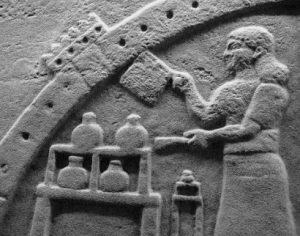 During the centuries following the emigration of the Sumerians, the country grew in wealth and power. Art, architecture, craftsmanship and religious and ethical thinking flourished. Sumerian became the main language of the earth and its inhabitants invented the cuneiform system of writing, originally pictographic, which gradually became stylized. This writing became the basic means of written communication of the Middle East for about 2,000 years.
During the centuries following the emigration of the Sumerians, the country grew in wealth and power. Art, architecture, craftsmanship and religious and ethical thinking flourished. Sumerian became the main language of the earth and its inhabitants invented the cuneiform system of writing, originally pictographic, which gradually became stylized. This writing became the basic means of written communication of the Middle East for about 2,000 years.
The first recorded ruler of Sumer is Etana, king of Kis (c. 2800 BCE), who is described in a document written centuries later as the “man who stabilized all lands.” Shortly after his reign ended, a king named Meskiaggasher found a rival dynasty in Uruk (the biblical Erech), far south of Kis. Meskiaggasher, who gained control of the region stretching from the Mediterranean to the Zagros, was succeeded by his son Enmerkar (c. 2750 BCE). The latter’s reign stood out for carrying out an expedition against Aratta, a city-state of northeastern Mesopotamia. Enmerkar was succeeded by Lugalbanda, one of his military chiefs. The exploits and achievements of Enmerkar and Lugalbanda are the theme of a cycle of epic tales that constitute the most important test of the first Sumer.
At the end of the reign of Lugalbanda, Enmebaragesi (c. 2700 BC), king of the Etna dynasty of Kis, became the chief ruler of Sumer. His enormous achievements included a victory over the kingdom of Elam and the construction in Nippur of the temple of Enlil, the chief deity of the Sumerian pantheon. Nippur gradually became the religious and cultural center of Sumer.
The son of Enmebaragesi, Agga (? -before 2650 BC), was the last ruler of the Etana dynasty, and was defeated by Mesanepada, king of Ur (c. 2670 BC), who founded the so-called 1st Dynasty of Ur, Its capital Ur. Shortly after the death of Mesanepada, the city of Uruk reached a prominent political position under the leadership of Gilgamesh (c.2700-2650 BC), whose exploits are extolled in the Poem of Gilgamesh.
Sometime after the twenty-fifth century BC, the Sumerian Empire, under the command of Lugalanemundu of Adab (c. 2525-2500 BCE), extended from the Zagros to the Taurus and from the Persian Gulf to the Mediterranean. Later, the Empire was governed by Mesilim (c. 2500 a.C.), king of Kis. Toward the end of his reign, Sumer was on a steep slope. The Sumerian city-states began constant internal struggles, exhausting their military resources. Eanatum (c. 2425 BC), one of the rulers of Lagash, managed to increase his kingdom through Sumer and some of its neighboring lands. However, his success lasted only a short time. The last of his successors, Uruinimgina (c. 2365 BC), introduced numerous social reforms but was defeated by Lugalzaggesi (who reigned 2370-2347 BC), ruler of the nearby city-state of Umma. For almost 20 years, Lugalzaggesi was the most powerful ruler of the Middle East.
By the 23rd century BCE, Sumerian power had declined to such an extent that it could no longer defend itself against foreign invasions. The Semitic king Sargon I the Great (who reigned 2335-2279 BCE) conquered the whole area and founded a new capital in Agadé, further north than Sumer, which became the richest and most powerful city in the world. The native village of northern Sumer and its conquerors gradually blended into an ethnic and linguistic group known as Akkadian. Sumer was given the name of Sumer and Akkad.
The Akkadian dynasty lasted about a century. During the reign of Sargon’s grandson, Naram-Sin (who reigned 2255-2218 BCE), the gutis, warrior people of the Zagros mountains, looted and destroyed the city of Agadé. Then they subjugated all Sumer leaving him vacant. After several generations, the Sumerians got rid of the guti yoke. Again the city of Lagash gained importance, especially during the reign of Gudea (c.2444-2124 BC), an extraordinarily devoted and competent ruler. Because they have found numerous statues of Gudea, it has become the best-known Sumerian monarch for the modern world. The Sumerians achieved full independence from the Greeks when Utu-hegal, king of Uruk (who reigned 2120-2112 BCE), won a decisive victory later held in Sumerian literature.
One of Utu-hegal’s generals, Ur-Nammu (who reigned in 2113-2095 BC), founded the Third Dynasty of Ur. In addition to being a victorious military commander, he was also a social reformer and creator of a legal code that predates The Code of Babylonian Hammurabi by almost three centuries. The son of Ur-Nammu, Shulgi (who reigned in 2095-2047 BC) was a successful soldier, skilled diplomat and patron of literature. During its reign flourished the schools and academies of the kingdom.
Before the beginning of the second century BCE, the Amorites, Semitic nomads of the desert west of Sumer and Akkad, invaded the kingdom. Little by little they gained control of important cities such as Isin and Larsa. The subsequent political disorder and confusion caused the Elamites to attack (c. 2004 a.C.) Ur and seize their last ruler, Ibbi-Sin (who reigned in 2029-2004 BC).
During the centuries following Ur’s fall, there was a bitter internal struggle for control of Sumer and Akkad, first between Isin and Larsa, and then between Larsa and Babylon. Hammurabi of Babylon defeated Rim-Sin of Larsa (who reigned around 1823-1763 BCE) and became the exclusive ruler of Sumer and Akkad, thus marking the end of the Sumerian state. However, Sumerian culture was adopted almost entirely by Babylon.
